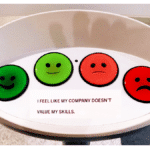Estimated reading time: 3 minutes
I ran across an article recently on the Society for Human Resource Management (SHRM) website listing “10 Tips for Successfully Managing Remote Workers”. It’s a good read and worth checking out.
As we continue to have a large number of employees working remotely, I do think that organizations have to think about how to incorporate tips like the ones in the SHRM article into management and leadership development training. Take it from a list to something more educational and actionable. Then use the list as a job aid or reminder.
Here are five types of training that your organization might already conduct. It could make sense to review the training content and confirm that it includes information about managing remote employees.
- PERFORMANCE. Performance management training should include a conversation about setting expectations and goals with remote employees. What is key in this content is making sure goals are set in a way that employees are held accountable for results. Meaning the employee has to produce an outcome to show they’ve met the goal. This will hopefully keep managers from falling into micromanaging habits.
- MEETINGS. I know of many organizations that do a short “meeting about meetings”. The intent is to keep the elements for meeting success top of mind. If you haven’t done a review of your meetings lately, it wouldn’t hurt to get it on the schedule. Do a review of business meeting basics and how those can be adapted to accommodate a remote environment.
- TIME MANAGEMENT. When we’re talking about managing a remote workforce, one of the tips that shows up regularly is teaching managers how to manage people they don’t see every day. Something that could help them do this is getting better at organization and time management. We’ve encouraged managers to manage by walking around. Now they may need to manage by writing things down.
- COMMUNICATION. Communication is always a hot topic but now, with a remote workforce, maybe it makes some sense to talk about written communications. Everything cannot be a conversation. And add to the training some reminders about active listening! With remote work, we don’t get to simply walk around the corner and ask someone to repeat themselves. Lastly, we need to help managers figure out how to find time to just connect with the team.
- RECOGNITION. This last training area is one I’m not sure how much we do in the first place. It’s about recognition and celebration. I know some management and leadership programs talk about recognizing people in a way that is meaningful to them. But I also know that sometimes we take the easy way out and order pizza for the team as a way to say thanks. With a remote workforce, we need to be more creative.
During this time, organizations should still be conducting training. Managers need training more than ever to help them keep employees engaged and productive. It would not take a lot of resources to review existing training content, make sure it addresses the needs of remote workers, and offer some opportunities for discussion.
While the COVID-19 vaccine news is very positive and encouraging, the people I’m chatting with say that remote work is going to be around for a while. It only makes sense to put the pieces in place to manage it well.
Image captured by Sharlyn Lauby while exploring the streets of London, England
22







